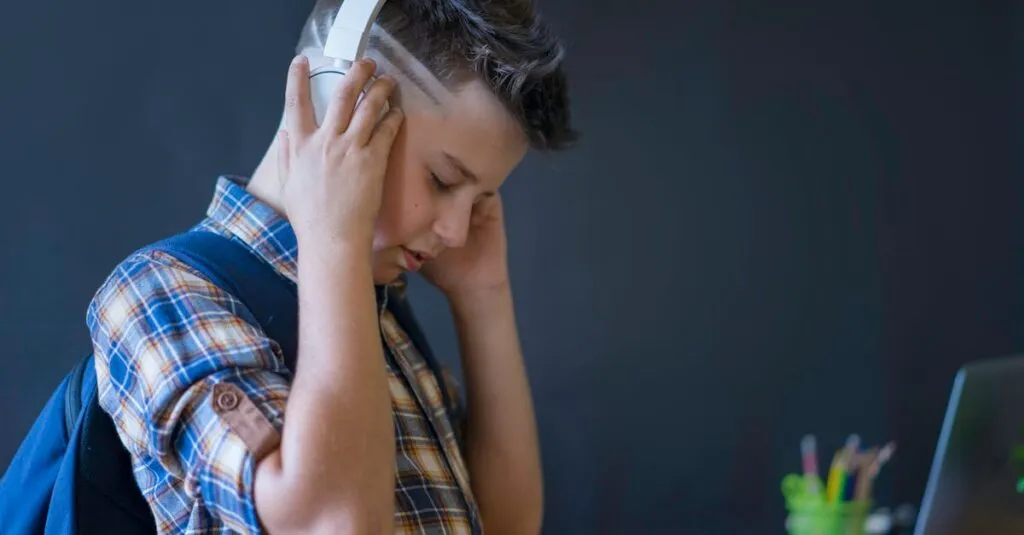Understanding Emotions with Playful Tunes
Forgiveness can be challenging for little ones. Music helps preschoolers express emotions beyond words. When children hear a bouncy tune, it makes them feel emotions like excitement or joy. It is similar to finding out there are cookies in the kitchen—yes, that exciting!
Playful musical activities teach kids to recognize their feelings. Think of a toddler dancing to ‘Baby Shark.’ Here, music acts as a language they understand.
How Music Enhances Emotional Understanding
- Music acts as a tool for self-expression.
- It creates an engaging environment for emotional learning.
- Children can channel their feelings through rhythm and movement.
Parents, singing songs about feelings can do the same. This practice teaches empathy and emotional vocabulary, helping them relate to others.

Letting Go through Movement and Music
Kids don’t come with a manual, but they’ve got rhythm! Teaching forgiveness becomes easier through movement. Let kids ‘shake it off’ to upbeat tracks. Do the hokey pokey and watch the grouchiness fade away!
Children learn by mimicking, so let them see you laugh and dance. It’s not only funny; it’s effective. Wiggle away from the ‘I-didn’t-get-my-way’ frown with music. The movement lets them release pent-up emotions, making room for forgiveness. After all, who can stay angry when doing the chicken dance?

- Shake it off to upbeat tracks
- Do the hokey pokey to lift spirits
- Let kids see you laugh and dance
- Wiggle away from negativity
- Encourage fun movements like the chicken dance
The Magical Connection between Music and Empathy
Music has a mystical ability to build empathy in tiny hearts. It transcends language, reaching a child’s inner world. Next time your child argues with a friend, cue the friendship songs playlist!
Listening to calming music can remind children of kindness and understanding. It’s like an invisible lesson in being nice.
Musical stories about forgiveness can show how characters solve friendship woes, mirroring real-life actions. These tales help children realize the impact of forgiveness, turning little grumps into true friends!

- Builds Empathy: Music can foster emotional connections.
- Transcends Language: It communicates feelings beyond words.
- Encourages Kindness: Calming melodies remind children to be nice.
- Teaches Forgiveness: Stories in songs highlight conflict resolution.
Dance it Out: Practical Advice for Parents
Ready for some fun? Let’s get those tiny feet moving! When teaching forgiveness through music, choose songs with simple words about feelings. Remember ‘Head, Shoulders, Knees, and Toes’? Add new forgiving lyrics! The silliness makes learning fun, and repetition creates understanding.
Engaging Activities
- Have children stomp angrily, then dance happily to dramatize mood changes.
- See which song makes them giggle the hardest—it’s a winner!
Sharing these musical moments creates memories, bonding time, and forgiving hearts. Parents will love the results and, you guessed it, the dancing chaos!

Taming Tantrums with Melodies and Moves
Meltdowns happen. Melodies can calm the toughest days. Have you watched a tired toddler transform with a lullaby? Try ‘piano calmness’ to ease stubbornness. Pushing your child to forgive? Switch gears with a dance party instead! It’s like putting socks on a cat—unpredictable but possible.
The music gradually changes their mood. Songs about letting go help kids understand forgiveness, both emotionally and physically. Encourage techniques like deep breathing while listening.
Music signals safe emotional expression, timing with little heartbeats to help them settle.

Music Moves to Foster Forgiving Hearts
Energize little hearts towards forgiveness with strategic song choices. Reinforce themes like kindness, sharing, and letting go of grudges. Imagine your child singing ‘I am sorry, so sorry.’ It’s powerful and sweet, like a sprinkle on ice cream.
Dance movements also bear powerful messages. Try mirror movements as ‘forgiveness actions’—your child mimics you, releasing emotions.
Create Family Soundtracks
Making forgiveness habitual can be achieved through:
- Engaging musical activities
- Encouraging singing about forgiveness
- Incorporating dance as a form of expression
These activities cement emotional intelligence, paving paths for kind interactions and lasting friendships. Music isn’t just noise; it’s magic!

Invite Interaction: Share Your Dance Stories
Join the dance revolution! The floor is open for your stories. Connect with other readers by sharing your child’s favorite forgiveness song or dance. Was it a catchy tune or a particular jig? Maybe you discovered a magical melody during a sibling spat.
Comments become a playlist of family favorites, rich with lessons for others. Reader engagement crafts a resolve-building community. Learning is a shared journey. Together, let’s spread peace among our pint-sized partners. Dance into our comments section with your stories!

